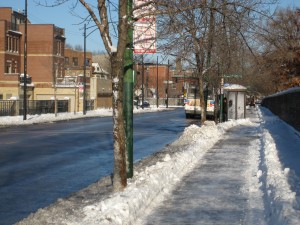The snow flurry that came and went over this Thanksgiving holiday in Seattle gave way to icy roads, wet and slippery sidewalks and driveways across our fair city. As challenging as winter can be in the Pacific Northwest, it is equally a challenging time of year for pedestrians who navigate this great city on two feet.

Most fractures are caused by falls, including fractures of the spine and hip.
Over 95% of hip fractures are caused by falls, and the rate of hip fractures is twice as high for women as it is for men.
The injuries caused by these falls can make it difficult for anyone to enjoy the normal activities of daily living like walking.
Pedestrian Safety Tips
Seattle OSS has a few tips for you to keep in mind while navigating the streets of Seattle including:
- Proper footwear – Pedestrians should wear the proper footwear for the weather conditions, such as shoes and boots with appropriate traction. Rain, frost, ice, and snow can make walking on footpaths very dangerous, so proper footwear can help prevent a dangerous slip and fall. Also, walkers should wear gloves in order to break their fall if they do slip, and keep gloved hands out of their pockets for the same reason.
- Proper clothing – Wear high visibility clothing to make yourself more visible to vehicles.
- Avoid walking on the streets – Freezing weather tends to turn roads into an icy hazard. Be aware of your surroundings and stay on the sidewalks or clear, cleaned paths.
- If you can’t avoid ice and snow, take shorter, slower steps to reduce the risk of a slip and fall and subsequent injuries, particularly when using the steps at any building as these can be dangerous when covered with snow or ice.
If you experienced a fall and need specialized orthopedic care, the surgeons at Orthopedic Specialists of Seattle provide excellent treatment options available for you.
